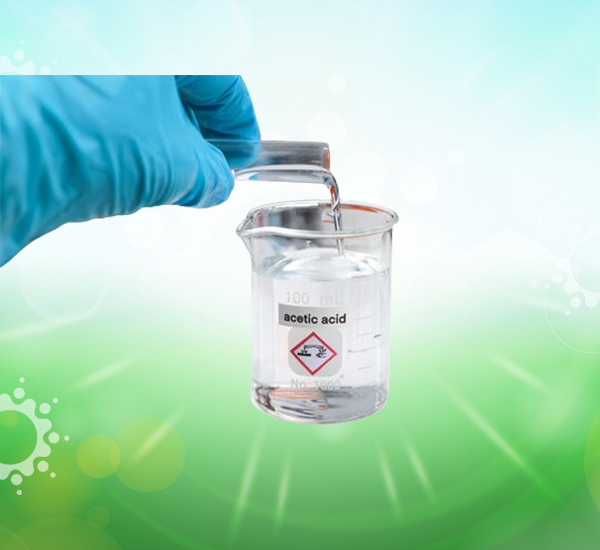
Acetic Acid
The first one is acetic acid, which is also called ethanoic acid. It is the second simplest carboxylic acid (after formic acid) and is a sour-tasting, foul-smelling liquid. Acetic acid is made up of a methyl group (CH₃-) bonded to a carboxylic acid group (-COOH), making it acidic. Glacial acetic acid is the pure form of acetic acid and gets its name because it crystallizes into ice-like solids at temperatures less than 16.6 °C (62 °F). It is miscible with water and a variety of organic solvents and is an important chemical intermediate.
Acetic acid occurs naturally in trace amounts in both plant and animal tissues and is involved in metabolic processes. Acetic acid, because it is a weak acid, only partially dissociates in water, which means it releases a moderate amount of protons compared to strong acids such as hydrochloric acid. Its multiplicity of properties makes it a common material in the food, pharmaceutical, chemical and agricultural industries.
Benefits
- Preservative Properties
- It can limit the growth of harmful bacteria and fungi, so it is a natural preservative.
- Antimicrobial Action
- This powerful disinfectant also used in cleaning and medical products can kill bacteria, viruses, and other microorganisms.
- Health Benefits
- Vinegar has been associated with better digestion, weight loss and lowered blood sugar levels, at least in some studies, when consumed in small amounts.
- Industrial Applications
- Widely used as a chemical building block to create plastics, adhesives, and synthetic fibers.

Uses
- Soil Amendments and pH Adjusters
- Acidity Management
- Soil acidity can improve nutrient availability and crop yield. In dilute form, it is occasionally used to correct certain nutrient deficiencies associated with high soil pH.
- Crop Protection
- Antimicrobial Action
- It is understood that acetic acid helps inhibit the development of harmful bacteria, mold, fungi, other plant diseases found in agricultural environments.
- It’s used to sanitize equipment, storage areas and even seeds before planting to minimize the risk of contamination.
- Natural Pesticide
- Pest Control
- This can serve to deter certain pests and reduce the need for chemical pesticides.
- When used diluted, it is sprayed on crops or to surround them to form an unfavorable atmosphere for diseases and insects.

